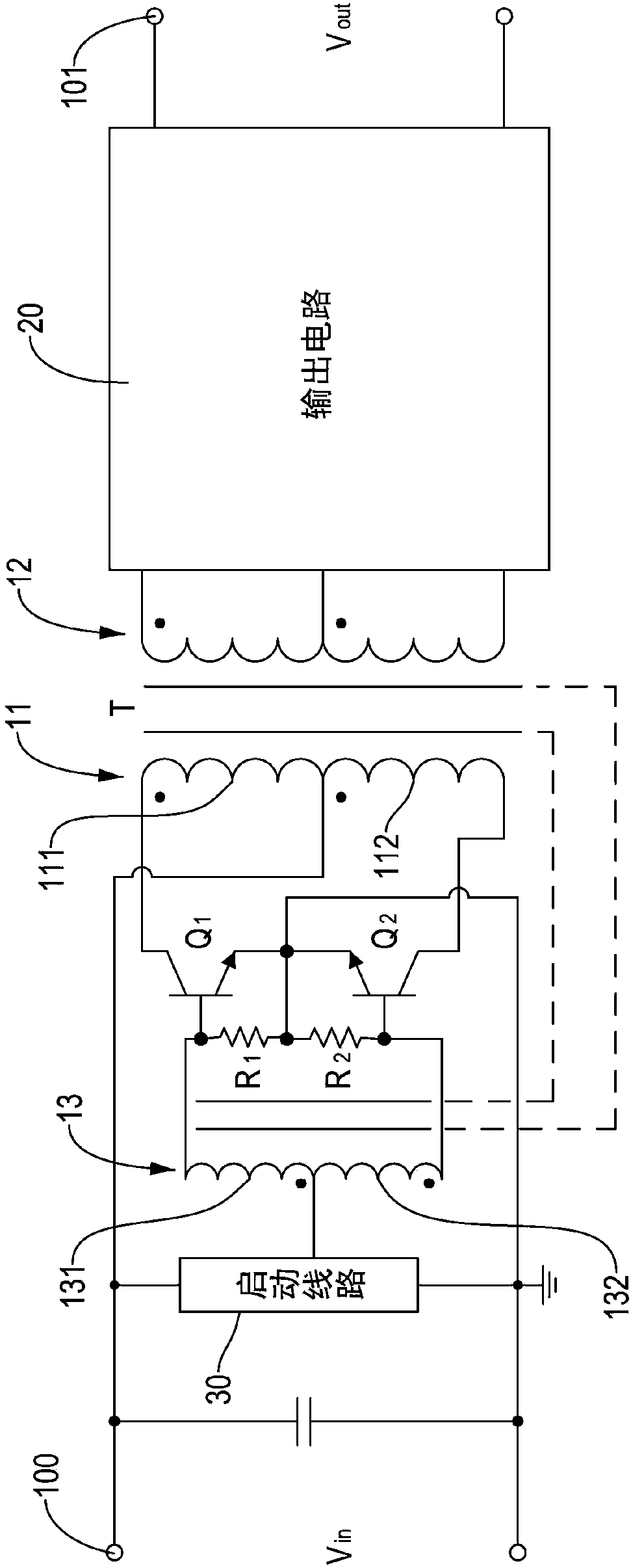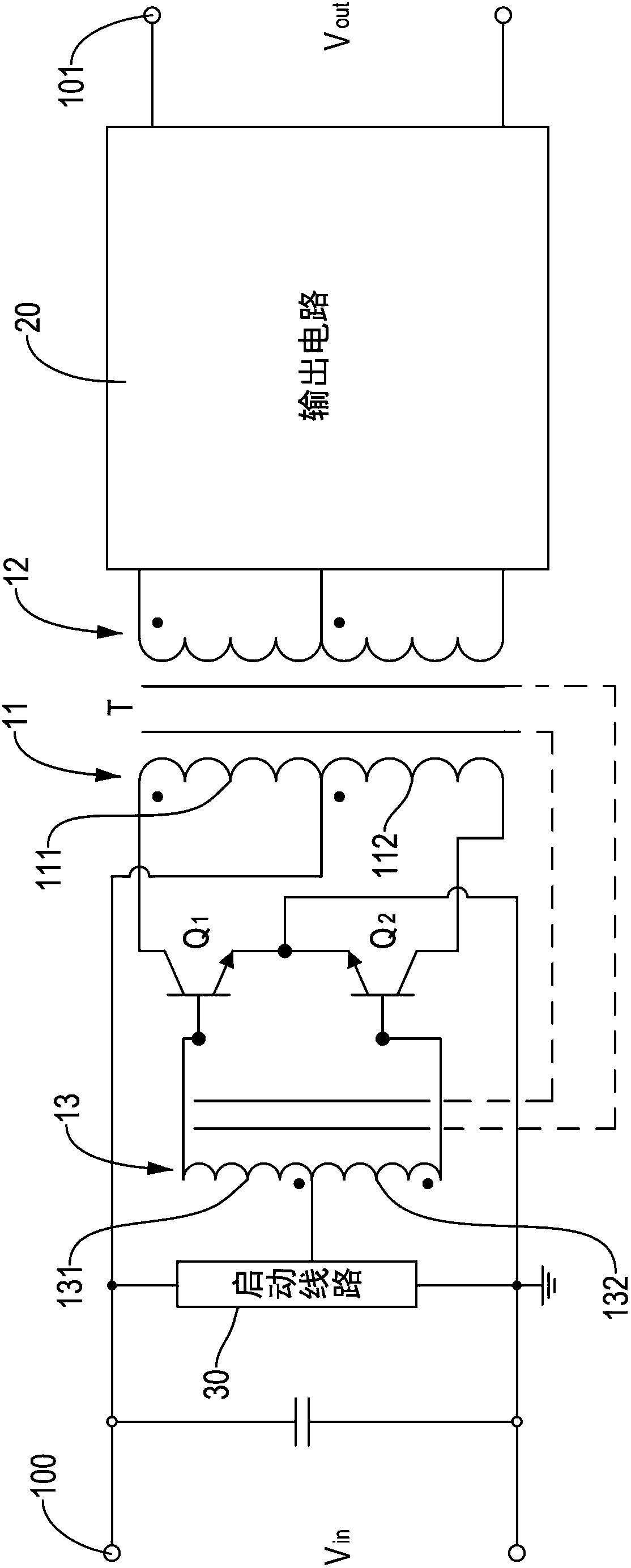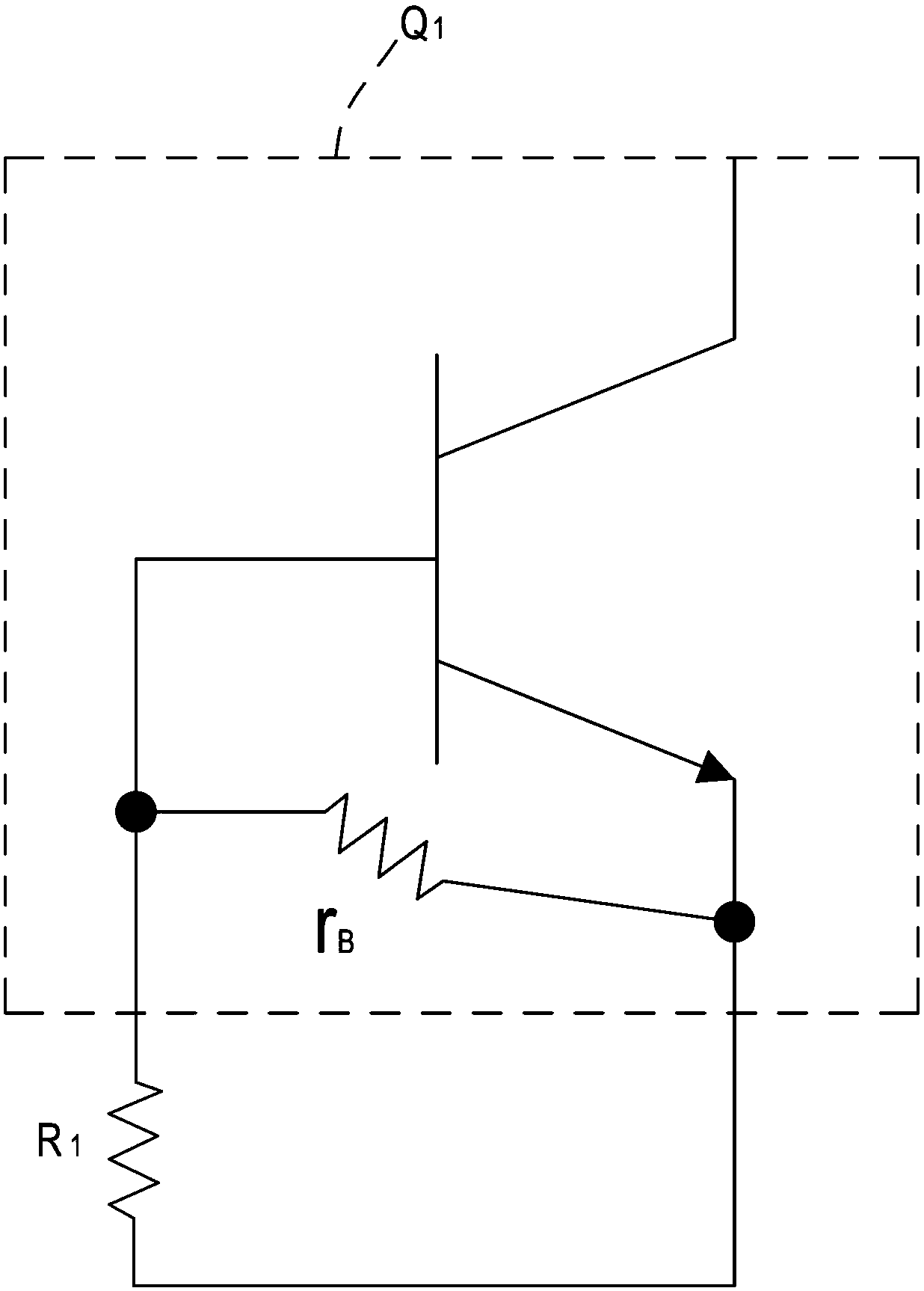Self-excited push-pull conversion circuit
A conversion circuit, self-excited technology, applied in the direction of output power conversion devices, electrical components, regulating electrical variables, etc., can solve the problems of reducing power conversion efficiency, increasing line normal power loss, etc., to ensure electrical characteristics and power supply. Conversion efficiency, shortening transition time, and increasing power loss
- Summary
- Abstract
- Description
- Claims
- Application Information
AI Technical Summary
Problems solved by technology
Method used
Image
Examples
Embodiment Construction
[0037] Please refer to figure 1 and figure 2 , the self-excited push-pull conversion circuit of the present invention comprises a push-pull circuit unit, a first resistor R 1 with a second resistor R 2 . The push-pull circuit unit may be a typical self-excited push-pull circuit, such as a typical Royer circuit or a typical Jensen circuit. In the embodiment of the present invention, the push-pull circuit unit includes an input terminal 100, a first transistor Q 1 , a second transistor Q 2 with a transformer T.
[0038] The first transistor Q 1 with the second transistor Q 2 It can be a three-terminal control element, each including a power supply terminal, a ground terminal and a control terminal. In the embodiment of the present invention, the first transistor Q 1 with the second transistor Q 1 may be bipolar junction transistors (Bipolar Junction Transistor, BJT), but not limited thereto, the power supply terminal is a collector terminal (Collector, C), and the grou...
PUM
 Login to View More
Login to View More Abstract
Description
Claims
Application Information
 Login to View More
Login to View More - R&D
- Intellectual Property
- Life Sciences
- Materials
- Tech Scout
- Unparalleled Data Quality
- Higher Quality Content
- 60% Fewer Hallucinations
Browse by: Latest US Patents, China's latest patents, Technical Efficacy Thesaurus, Application Domain, Technology Topic, Popular Technical Reports.
© 2025 PatSnap. All rights reserved.Legal|Privacy policy|Modern Slavery Act Transparency Statement|Sitemap|About US| Contact US: help@patsnap.com



